The Chatham Arts Council is investing in artists through our Meet This Artist series, introducing you to 12 Chatham County artists each year in a big way. The fine folks at Hobbs Architects in downtown Pittsboro are powering our Meet This Artist series this year. Architecture is art, and the Hobbs crew values art in our community. So, take a look. Meet your very inspiring neighbors. Meet ceramics artist Bronwyn Watson.
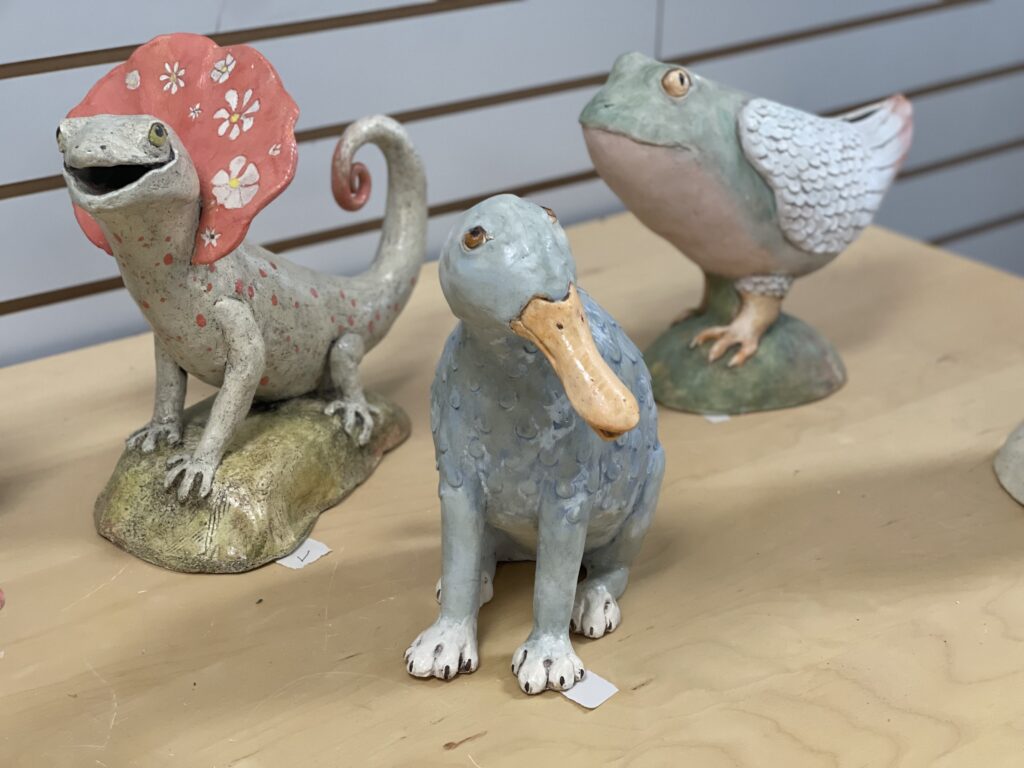
Welcome to Green Turtle Studios of Siler City, where sunlight illuminates the enchanting world created by ceramic artist Bronwyn Watson. Surrounded by her creations, from life-like cats and birds to mythical creatures, Bronwyn flips through her sketchbook filled with untamed ideas, each awaiting its transformation into clay. Not far from her side, her faithful dog Sammie basks in a sunbeam, underscoring the bond between artist and nature. Bronwyn’s cool blue eyes reflect a gentle spirit. Through her sculpture, she depicts the natural world with kindness and whimsy, inviting all to explore her imaginative realm. Today, we delve into the mind and artistry of Bronwyn Watson, uncovering the inspirations that breathe life into her exquisite ceramic sculptures.
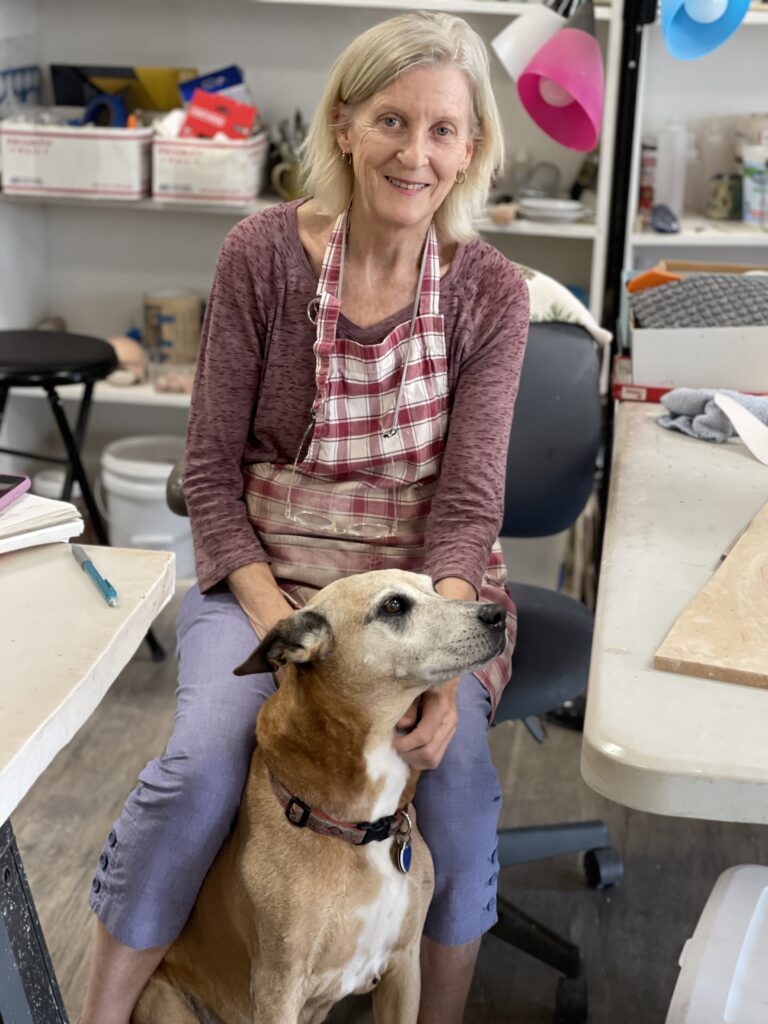
Tell me a little bit about how you got started with art. Did you begin as a child?
As a child I always drew, and I just had this fascination–or crush on–horses, like a lot of little girls. I would draw horses all the time, just everywhere, on scraps of paper, the edges of newspapers–or I’d make a little book by stapling typing paper together. Then I’d draw a horse, a different horse on each page, and each one would have a different expression. In the summers, I was sent to an art day camp and had a chance to play with clay, and of course I made a horse head. I was so surprised that I could make a horse head out of clay.
How old were you? Do you recall?
I don’t know. I think I started with the horses when I was about eight. It was a way to express feelings and emotions I had no words for. It continued on through most of my teens, but then my crush on horses disappeared and along with it, the drawing. I picked up drawing later in my twenties and decided to go to art school.
Where did you study?
I went to the San Francisco Art Institute and focused on drawing and painting. I learned a lot, but in the end it never quite sat right with me—the two-dimensional aspect of it. I didn’t realize at the time that working with my hands in the three-dimensional realm might suit me better. After art school, I continued making art in my studio, but it just felt kind of lonely. I wanted to feel more useful, and after reading an article about the nursing shortage, I decided to go back to school and become a nurse.
I just set that art thing aside. I didn’t miss it. I was into nursing. Shortly before I retired from nursing, which was about six years ago, I found a studio space at the NC Arts Incubator, down in the basement, and started working with clay. I had taken some ceramics classes on and off over the years, including some at the ceramics program that Central Carolina Community College used to have in Siler City, which was wonderful. I started out making mugs and bowls and things like that but then began making these low-relief narrative wall hangings. The image of a mouse came to me, and the wall hangings started depicting mice, whole families of mice and other critters doing various activities. A customer once told me they reminded her of Beatrix Potter.
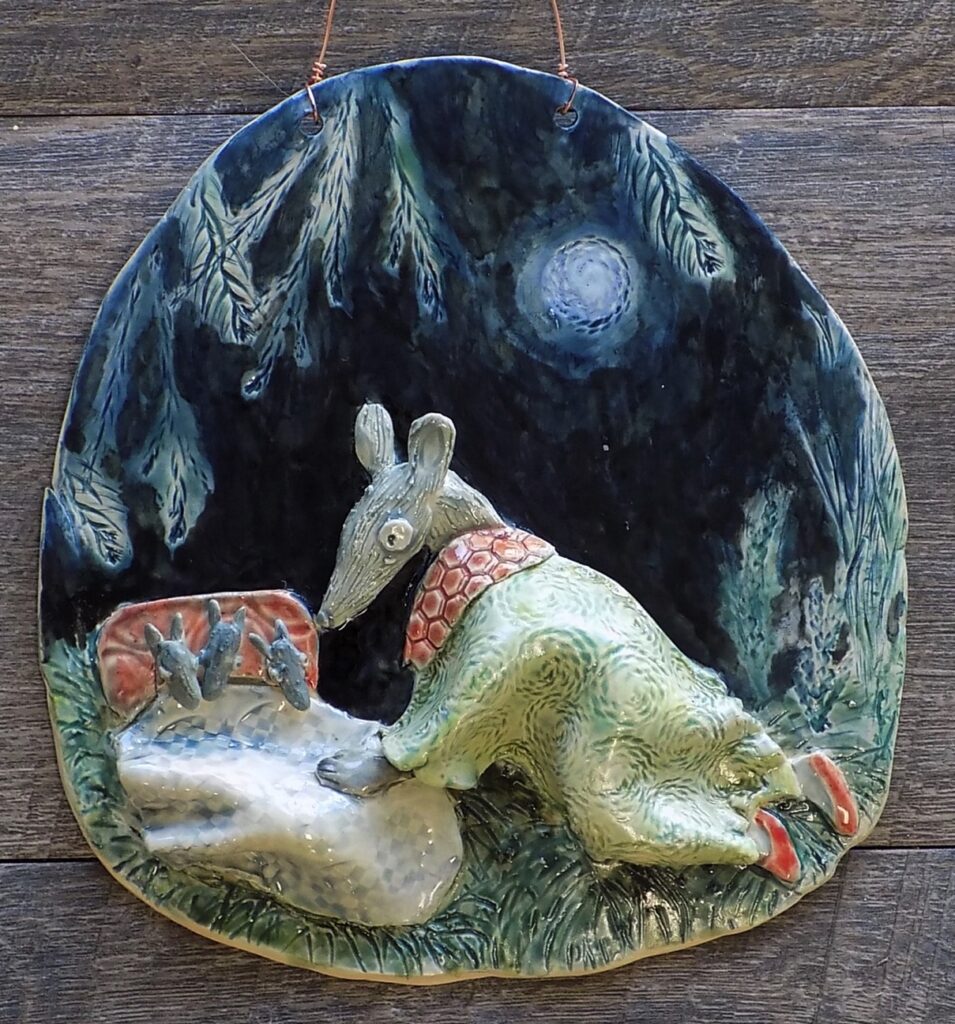
So the formal training in drawing and painting comes in handy, after all?
Yes, yes. It comes in handy. I make lots of sketches of figures to get ideas. When one of those ideas seems interesting, I map out how to make it and hope it will come together when I’m finished.
It seems like your inspiration comes pretty gently to you, these little characters, these narratives?
They come from sketching, usually. I start without any preconceived ideas and hope that something pops up and I find some inspiration. Sometimes I’ll get a picture in my mind but not that often. As hard as I try, there’s always an element of fairy tale whimsy in my work. It just comes out, and there it is. It’s quite unintentional. I think that’s what happened with the mice. I didn’t realize how much that was a part of me until I started making these mice and animals. It was unexpected. You know, you look at your thing after you’ve made it, and sometimes you can see something you were completely unaware of.
Almost like they have a life of their own.
Well, yes. Eventually though, the mice theme changed, and I began using various other kinds of animals, which then turned into three-dimensional animal heads that could be hung on the wall. I made a lot of them. After the heads, I progressed to making the entire body which could come off the wall and be free standing.
What is it about animals that speaks to you?
I think it’s easiest for me to express myself through animals, rather than the human form. It’s too direct for me, the human form. Animals are a good way to express emotions and feelings indirectly.
Are horses still number one for you?
No, no horses. You know, they’re too familiar to me.
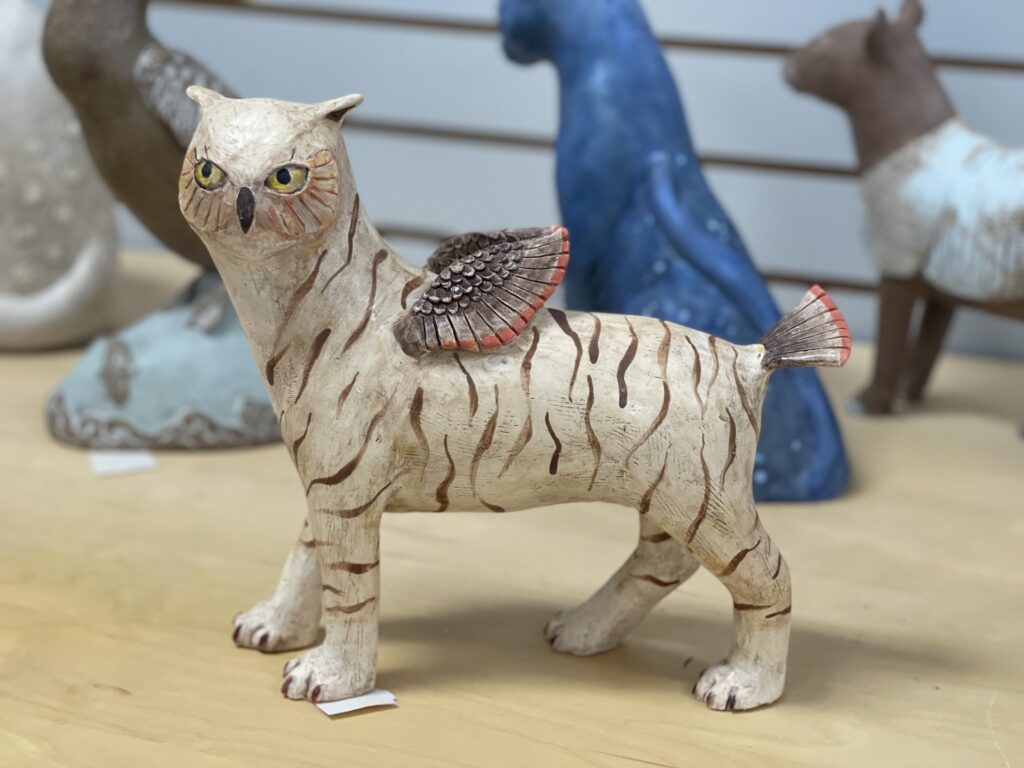
Horses are too familiar? As in, you are too familiar with their anatomy, their realism, to really feel like you can play?
They were so much part of my childhood, but that chapter of my life is now in the past. I’m very grateful that they were part of my life during that period because they gave me a way to express feelings and emotions I didn’t have words for. Now I still use animals to express myself, just in a different way. This year, they’ve changed into what I call “combination” animals or chimeras. I had always admired the art of ancient Mesopotamia and the Middle Age where there are many depictions of chimeras–griffins, centaurs, and phoenixes. I always wished I could do something like that, but I couldn’t find an inroad to them. I didn’t try to force it and decided I would just admire the originals.
This year though, while doing some sketches, a chimera popped out, and it was kind of exciting. It was one that felt like me. My version is composed of usually two different animals fused into a new one that I try to make plausible and believable. Stepping back from them, they seem like a metaphor for my life–the coming together of disparate parts of myself. I grew up in Germany, so I kind of have an American and a German identity, and I imagine the different parts of myself coming together in these chimeras.
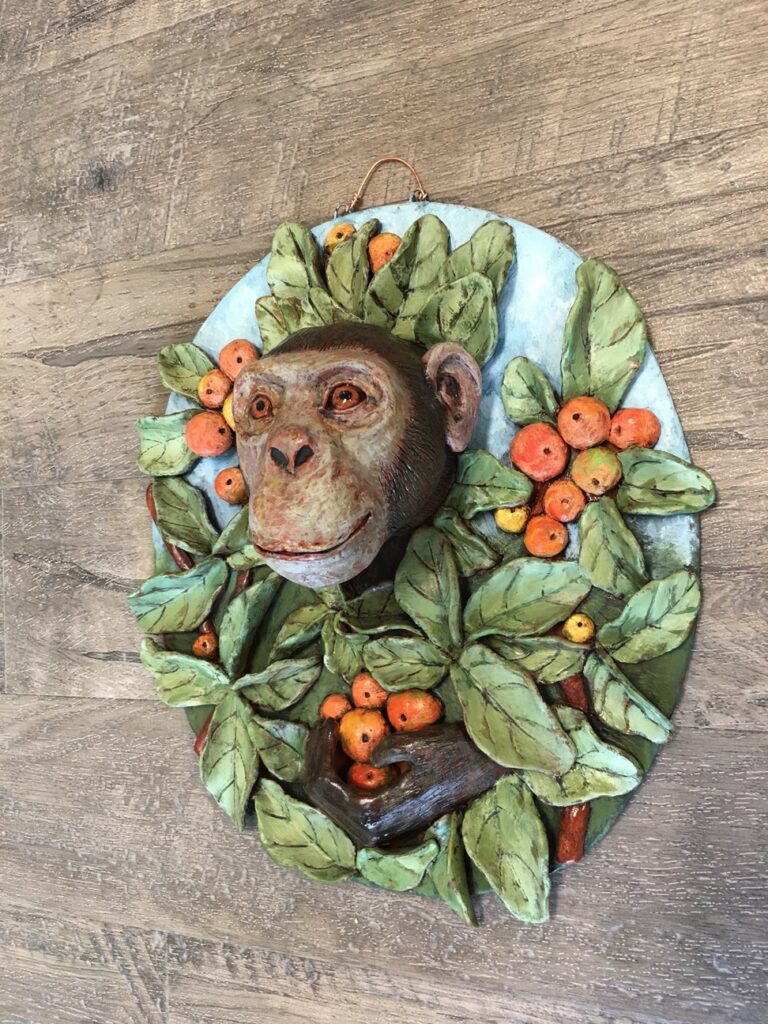
Can you speak a little bit about the physical process? You start with sketches, and then what is it like once you have your hands working the clay?
Sure. Well, I do hand building, so I don’t use the wheel. A lot of hand building is making slabs. I’ll form the body of the animals from a slab. That’s a lot like . . . I don’t know if you sew, but when you have a sewing pattern, the garment gets sewn together from flat patterns. So in the same way, I’ll make a flat template and cut it out from the slab, and then form it into a three-dimensional shape. You can cut darts just like you would with cloth.
A really good metaphor! I do sew. That makes perfect sense.
Yes. it’s basically just that: making a hollow shape. And then I’ll give definition to that shape so that it looks more organic and life-like, like a body, you know?
Interesting. I’ve thought of sculpting as having something solid that you’re chipping away at. But this is sort of the opposite.
There are different methods to sculpting clay. Some artists start with a solid block of clay that’s then hollowed out.
I’ve seen that as well.
It has to be hollow, or it’ll explode in the kiln. A sculpture can also be made using coils to build up the form and possibly adding shapes using the pinch pot technique. I often use a combination of these methods. Sometimes I’ll be working on a piece for a long time, and if it’s just not coming together or it just doesn’t look right, doesn’t have the right expression, I might do radical surgery. Like, cut it in half, then cut out a big chunk, then put it back together, and maybe add more clay. My least favorite thing is having to just throw the whole thing out, you know, so before I toss it, I’ll try to take it apart, rearrange, and put it back together.
Ouch! I’m sure it hurts to have to sacrifice one to the rubbish bin.
Oh yes, all those hours you spend working on it and it doesn’t come together are frustrating. But I put it behind me, hope I’ve learned something, and carry on.
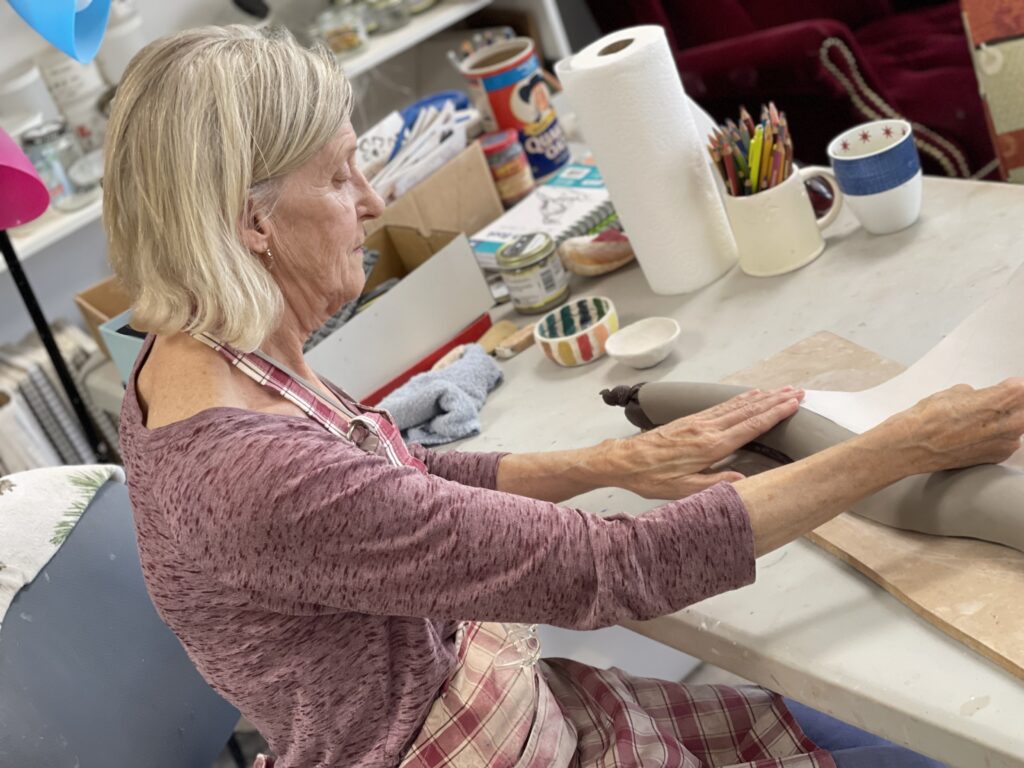
So now you’ve retired from nursing. That was your lifelong career. Where do you place art, now that you’re retired? Is art something you do to bring in income, or is it purely for pleasure?
I don’t have to do it to make money, which I’m really glad about because it takes all of the pressure off. I can just work as slowly as I want and do as much or as little as I want. I like to have a focus in my life, and the easiest way for me to have that and express myself is through visual art and using my hands. I also teach hand building to small groups on occasion at my studio in Siler City. Mostly though, I like making something that other people want to take home and which makes them smile.
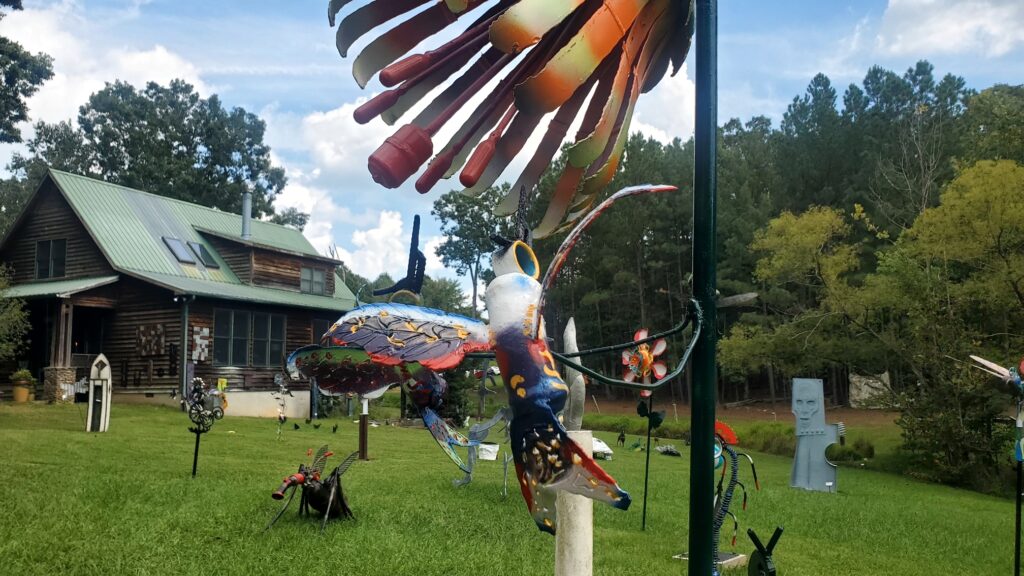
Aside from your studio, where can folks find your art?
Of course! Come Out and Play is such a fun outdoor sculpture event held at a local farm with music and food. My art will be featured there from August 26 through the end of September. I also have two pieces in the North Carolina Botanical Garden: Sculpture in the Garden show that runs from September 16 through the beginning of December. And of course, I’ll be a part of the annual Chatham Artists Guild Studio Tour this December.
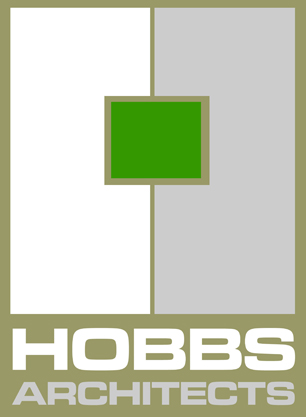
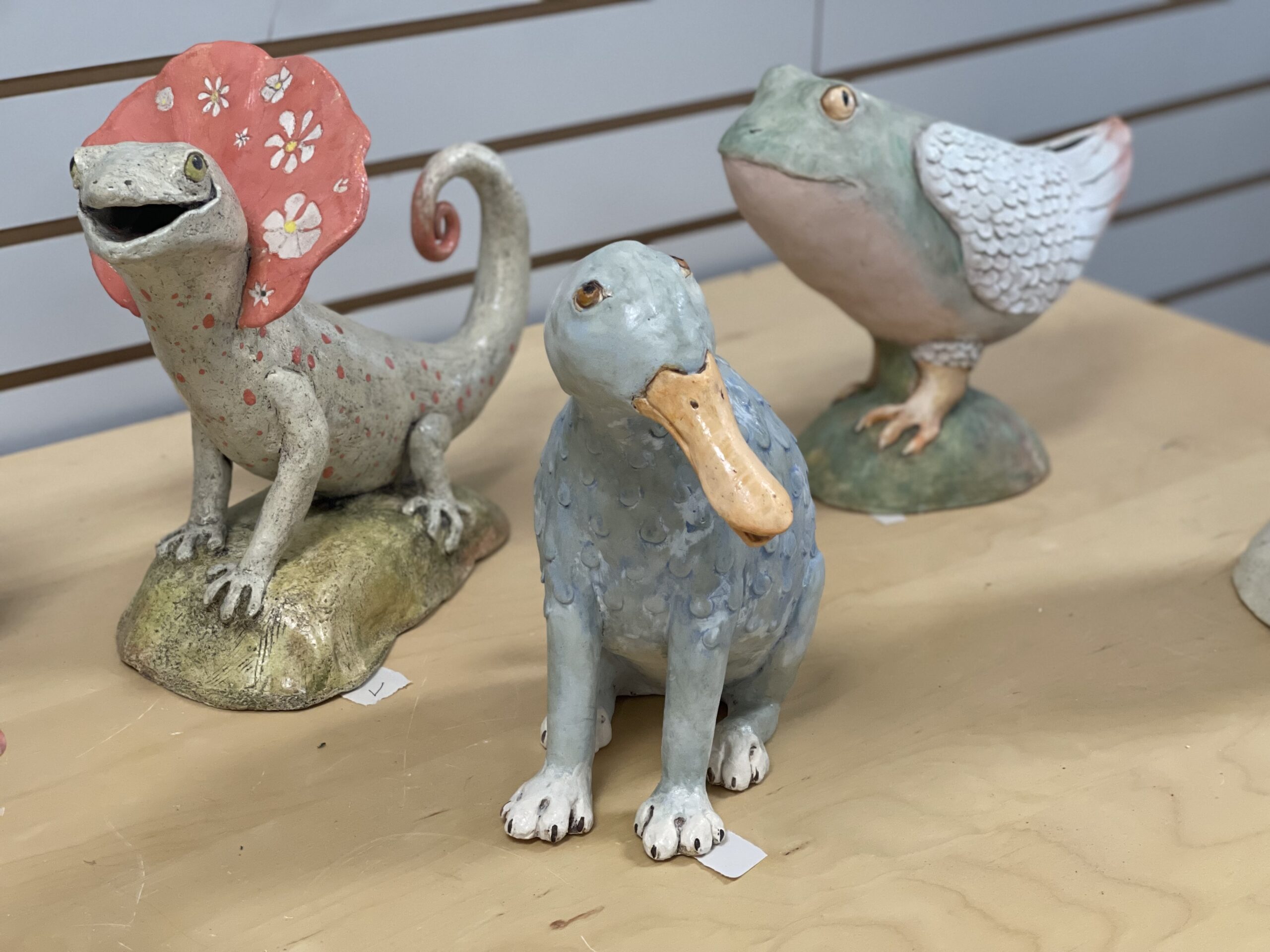
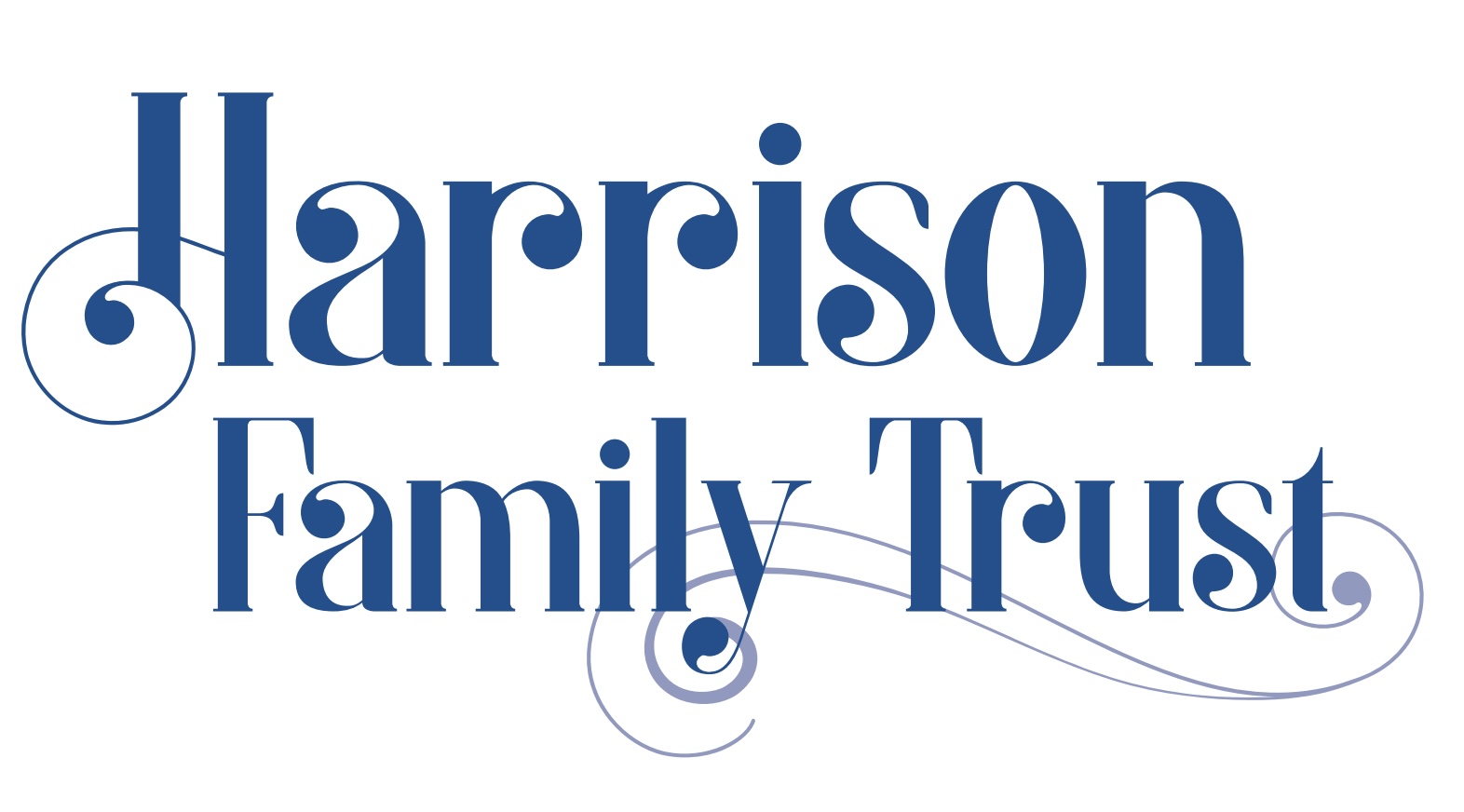

Bronwyn’s work is truly one-of-a-kind! Such a talent! Her pieces always make me smile with their gentle colors and whimsy!
Thank you Barabara!
Thought I know Bronwyn personally, I learned more about her in this blog piece. You captured her gentle nature and curiosity. Thanks for this profile.